The AMD Radeon R9 Nano Review: The Power of Size
by Ryan Smith on September 10, 2015 8:00 AM ESTOverclocking
Finally, no review of a high-end video card would be complete without a look at overclocking performance.
Of all of the Fiji cards overclocking the R9 Nano is perhaps the easiest and certainly the most unusual. Due to the fact that the card is essentially a 1000MHz Fiji card with a heavy power throttle, the card is already validated for clockspeeds that under load it doesn’t have the available power to reach. As a result while one can crank up the clockspeeds, the card isn’t going to move until you increase the power limit. And even then you are more likely to hit the power cap again than you are to break 1000MHz sustained. So overclocking the GPU is something of an academic affair.
| Radeon R9 Fury/Nano Series Overclocking | |||||
| Ref. R9 Fury X | ASUS R9 Fury | Ref. R9 Nano | |||
| Boost Clock | 1125MHz | 1075MHz | 1075MHz | ||
| Memory Clock | 1Gbps (500MHz DDR) | 1.1Gbps (550MHz DDR) | 1.1Gbps (550MHz DDR) | ||
| Power Limit | 100% | 115% | 135% | ||
| Max Voltage | 1.212v | 1.169v | 1.2v | ||
Overall we were able to overclock our sample to 1075MHz on the GPU and 550MHz (1.1Gbps) on the memory. However load clockspeeds were almost always under 1000MHz even with a generous 35% increase in the power target. Overdrive does allow for a larger increase – up to 50% – but with the R9 Nano featuring a less robust power delivery system designed to push less power than R9 Fury or R9 Fury X, we’re hesitant to increase the limit further without a better idea of what the card can safely sustain for extended periods of time.
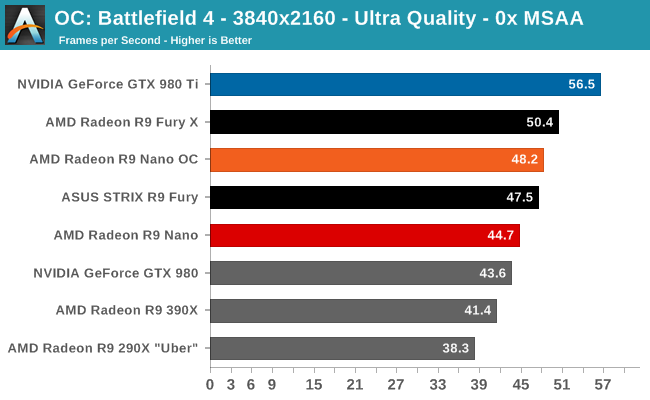

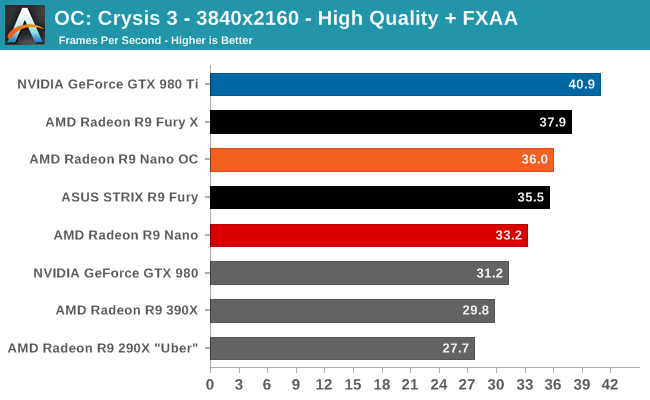
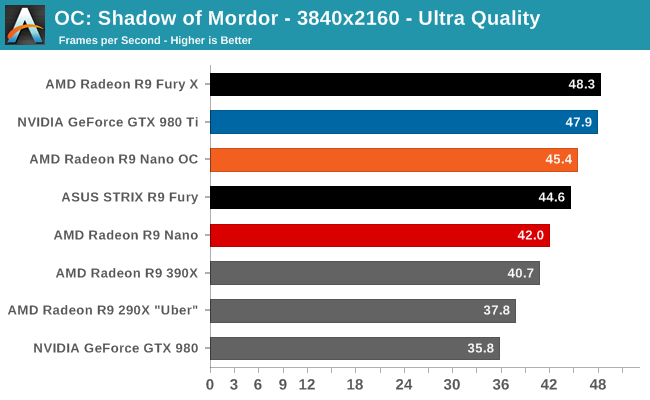
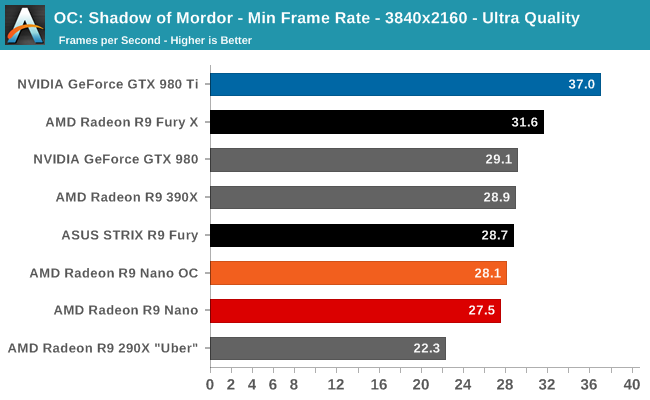
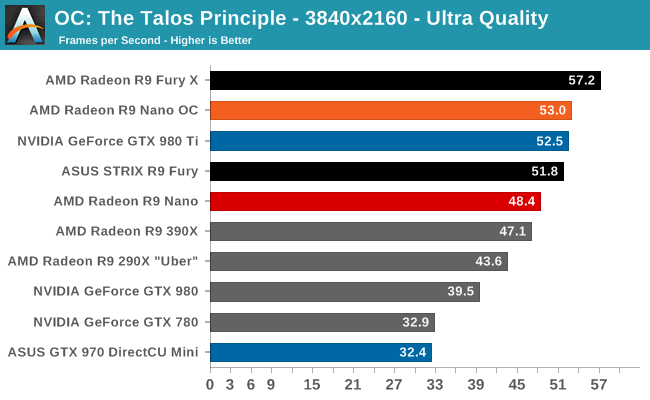
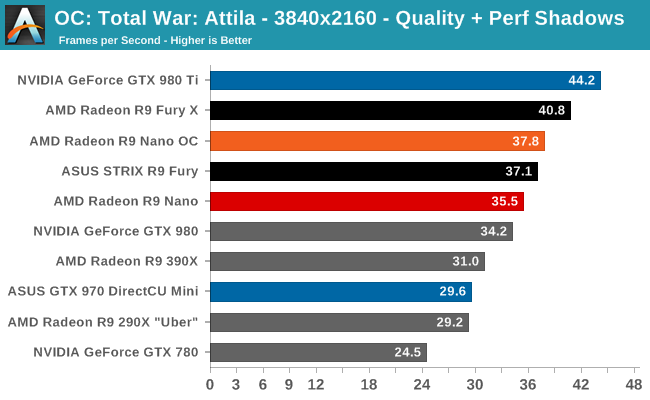
The overall performance gains from overclocking aren’t huge, but at 7-10% they also aren’t too shabby. However since higher clockspeeds quickly ramp up the power requirements due to the higher voltages required, the performance gains won’t be anywhere near the 35% increase in the power limit, despite that we are in fact still power limited.
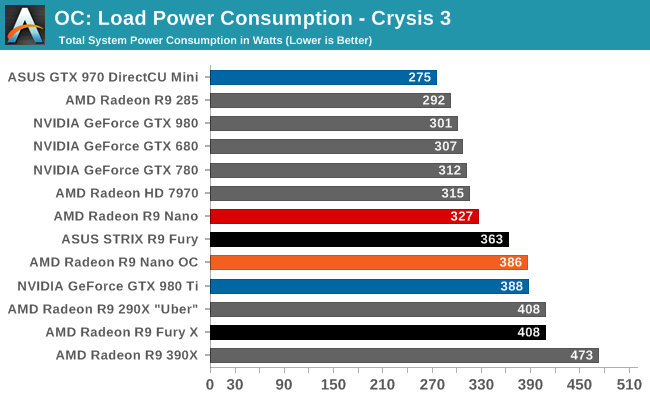
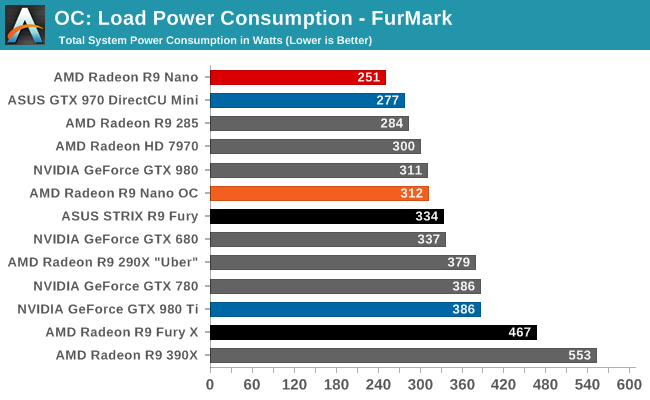
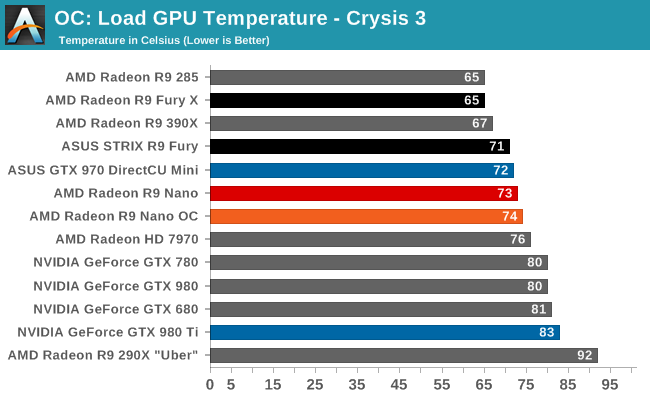
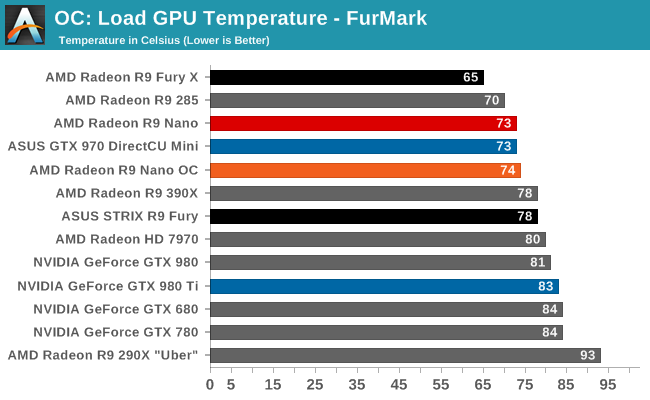
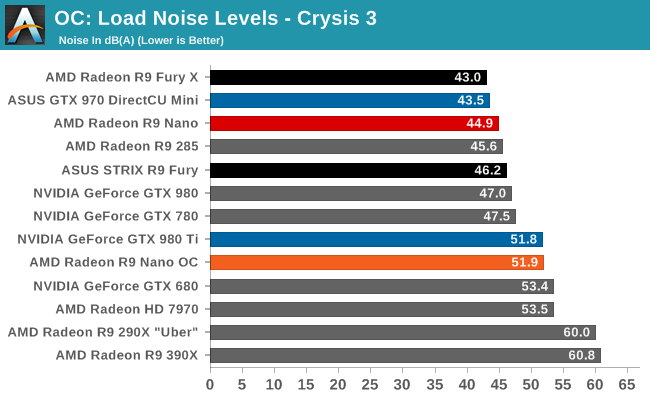
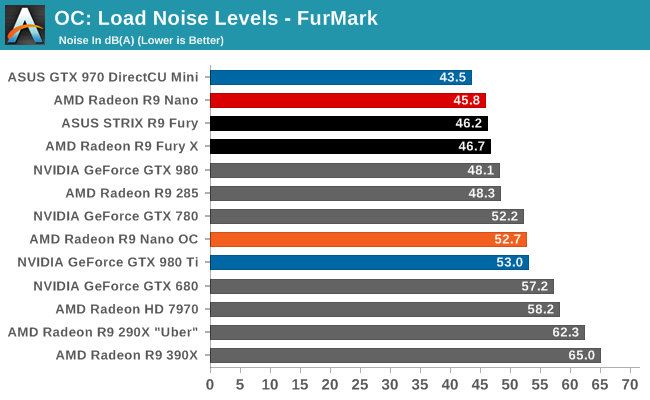
Meanwhile the 35% increase in the power limit has a definite knock-on effect on the cooling system. The R9 Nano’s cooler is able to keep up with the additional load, holding temperatures to 74C, but noise levels are now over 51dB(A). Power consumption at the wall is similarly affected, with the R9 Nano essentially giving up all of its energy efficiency gains in the process.










284 Comments
View All Comments
itproflorida - Friday, September 11, 2015 - link
"As these benchmarks are from single player mode" haha,Kutark - Thursday, September 10, 2015 - link
I think *overall* AMD has a win with this as they've found a market (albeit small) that they can fill with a product without competition.This does lead me to wonder, what can Nvidia do? We know maxwell 2 is a little more power efficient than fiji... could they do a similar binning and back a GM200 chip down a 100mhz or so at a 175w tdp and produce similar results in a similar sized package? I know the HBM makes it a bit easier for the small form factor, but i don't think people will cry over half an inch longer board for an nvidia card in the same market.
Peichen - Friday, September 11, 2015 - link
GTX980 is already a 175W card. Reference GTX980 have the same power plug requirement as the Nano.slapdashbr - Friday, September 11, 2015 - link
nVidia isn't pushing (as far as I know) any of it's AIB partners to do this, but: gigabyte could just make a gtx 980 on the same PCB as that 970 mini. The 980 only uses what, 165W? 180 maybe? it's roughly on par with the nano to be honest, and with the fairly low power draw I really don't see why you can't have a 980 on a shorter card. Honestly an ITX-size 980 was what I wanted as soon as they were announced, for god's sake, the r9-380 can draw more juice than a 980 and those are available in ITX form factor.Kutark - Friday, September 11, 2015 - link
Fair point. I still wonder though if they did a GM200, basically a 980ti thats backed down on clock rates to meet a lower TDP, what it would look like.medi03 - Saturday, September 12, 2015 - link
There is more to it: that HBM memory thing allows for more compact designs.extide - Monday, September 14, 2015 - link
Well yeah, but there are already ITX sized cards out there with GDDR5 (GTX 970, R9 380, etc) so it's obviously possible. PCB might be a little bit bigger but it can still be ITX sized.Kutark - Wednesday, September 30, 2015 - link
Not *that* much more compact. From what i understand we're talking about half an inch or so shorter because of the HBM.Jm09 - Thursday, September 10, 2015 - link
I wish amd would of released a nano and a nano-x with this choice being the nano x as its a binned full Fiji chip. I think an r9 nano competing in the $400 range would of been a huge hit, and raise brand perception which amd needs a ton of right now.Peichen - Friday, September 11, 2015 - link
Nano is the full chip. It just runs at a lower clock than Fiji X and Fiji, the actual trimmed card.